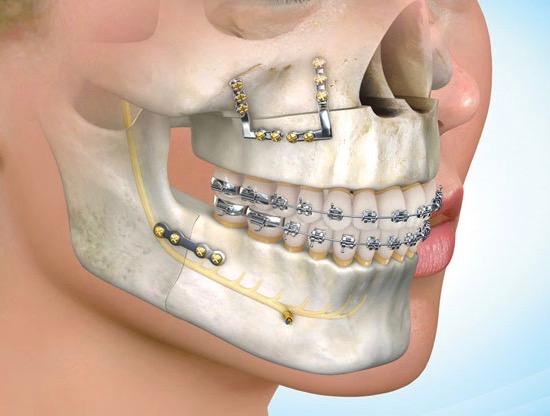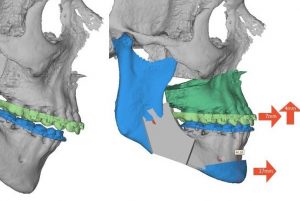Oral & Maxillofacial Surgery
Oral and maxillofacial surgery is defined as the specialty of dentistry that includes the diagnosis, surgical, and adjunctive treatment of diseases, injuries, and defects involving the functional and esthetic aspects of the bone and soft tissues of the oral and maxillofacial region. These include complex tooth removal, surgical removal of wisdom teeth and impacted teeth, dental implants and related bone grafts, sinus lift surgery, temporo-mandibular joint (TMJ) treatment, cleft lip palate, facial trauma or fracture, and orthopedic surgery of the jaw bone. In addition, they will also do biopsy and removal for jaw bone cysts, oral tumors, and tissue hyperplasia.
Orthognathic Surgery

Malocclusion is caused by ill-developed jaws, such as under-developed jaw or over-developed jaw. If the situation is not too serious, it can be solved by orthodontic treatment. However, if the jaws discrepancy is too large, orthongathic surgery is needed to solve the problem.
Basically, orthognathic surgery moves the jaws and teeth to the best position so that good occlusion and normal facial profile are resulted.
What are the advantages of jaws correction?
After jaws correction, the upper and lower teeth fit properly and patients enjoy better chewing and enunciation. Also, the risk of temporomandibular joint disorder is lowered. Therefore, the overall oral health is improved, and thus the living quality.
How do I know that my jaws are ill-developed?
If you have poor teeth positioning and suspect that you have jaw problem, you should visit an Oral Maxillofacial surgeon for a detailed consultation. Apart from clinical examination, the surgeon will also take photos for your face, make dental model, take special radiographs, perform computer analysis and even make use of 3D model to obtain accurate diagnosis.
After diagnosis is made, how will the orthognathic surgery be carried out? Most of the patients in need of orthoganthic surgery are those who have certain problems on their jaw alignment. Therefore, prior to the surgery, the patient should undergo an orthodontic treatment which normally takes 12 to 16 months by the orthodontist. The surgery is carried out under general anaesthesia and usually lasts around 2-4 hours. Under normal circumstances, the patient only needs to be hospitalized for two days after the surgery. There will be no scar left on face since the whole operation procedure is performed inside the mouth.
Most of the patients in need of orthoganthic surgery are those who have certain problems on their jaw alignment. Therefore, prior to the surgery, the patient should undergo an orthodontic treatment which normally takes 12 to 16 months by the orthodontist. The surgery is carried out under general anaesthesia and usually lasts around 2-4 hours. Under normal circumstances, the patient only needs to be hospitalized for two days after the surgery. There will be no scar left on face since the whole operation procedure is performed inside the mouth.

